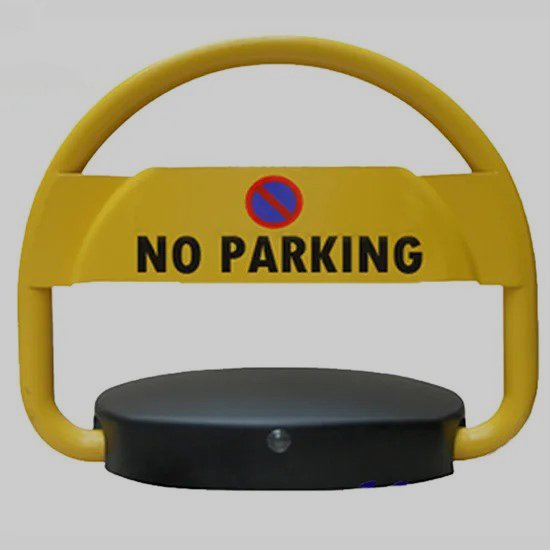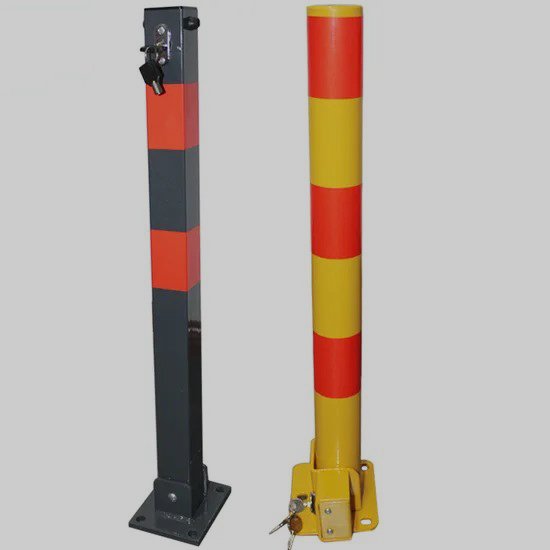If you deal with parking space thieves regularly, then you know that protecting parking areas is a must. This applies to residential areas, office buildings, or even private lots. The best line of defense often starts with parking barriers designed for long-term deterrence.
The right car parking lock doesn’t just protect a rectangle of asphalt; it eliminates daily stress and prevents confrontations. It ensures that the space you pay for remains exclusively yours. If you’ve been looking for a solution to stop brazen parking space thieves in their tracks, this article covers everything.
Signs Your Parking Space Needs Better Protection

Some parking challenges appear occasionally but others remain persistent. Others stick around. Having repeated warnings indicates you need to evaluate your parking spot security measures.
- You continue to see unknown vehicles occupying your designated area, even after placing clear signs for marking spaces.
- Employees and tenants continuously report that their designated spaces have been occupied.
- You needed to remove cars from spaces more than once during the last thirty days.
- Your only current physical deterrents for space protection consist of painted numbers and warning signs.
These aren’t just inconveniences. Such conditions show that traditional passive parking methods require improvement at their current capacity. By implementing a stable car parking lock system, authority is restored to the owners of parking spaces.
Most Effective Car Park Lock Types for Different Intruder Scenarios
Every situation requires its own individual solution. The selection of an appropriate car parking lock depends mainly on the nature of the parking lot, and the frequency of unauthorized access and required user permissions.
1. Folding Manual Locks
Simple manual car park locking posts with fold-down barriers create an effective barrier against casual entry as they offer enough resistance. Manual folding car park locks work best in residential driveways and low-traffic areas for tenants.

2. Remote-Controlled Car Parking Barriers
Private office lots or condominiums that require multiple users to gain remote access benefit from automatic locks that help reduce delays and minimize disputes. Automatic barriers for car parks such as the JW-BW-8 Automatic Remote Control Barrier Car Parking Lock currently available on the market have the ability to integrate with smart entry systems for added convenience. Also, please see JACKWIN video of all spare parts and installation instructions.

3. Bollards and Posts
Manual car bark barriers with tamper-resistant mechanisms are more suited for defending car parks from determined offenders. Such protective systems prove essential for safeguarding high-risk areas such as city parking lots and valuable loading zones.

4. Industrial and Tall Frame Barriers
Commercial sites requiring truck or oversize vehicle restriction will find a best combination of car park height barriers and vehicle barriers for car parks provides effective physical protection. These are also used where theft prevention meets liability concerns.
Car Parking Lock Installation Basics
Site Preparation
Before drilling the first hole, proper preparation ensures your car park lock barrier functions correctly for years. Precisely mark the barrier position, considering both your vehicle’s approach angle and the parking space’s dimensions.
Many installations fail because owners rush through this critical preparation stage. Take time to check overhead clearance, ensuring the barrier won’t interfere with vehicle doors or trunks when opened. Measure twice and mark clearly with chalk lines that won’t wash away during the installation process.
Concrete vs. Asphalt Installation
Installation methods vary dramatically depending on your parking surface material. Concrete provides the most stable foundation for any car parking lock system, allowing for direct anchoring through expansion bolts or chemical anchors. A hammer drill with a masonry bit makes clean holes that securely hold barriers against even determined removal attempts.
Asphalt presents unique challenges due to its softer, more flexible nature. Standard concrete anchors often work loose over time as asphalt expands and contracts with temperature changes. For reliable asphalt installations, specialized longer anchors with toggle mechanisms distribute pressure across a wider area. Some professional installers recommend creating concrete footings beneath asphalt for critical car park security barriers to ensure maximum stability.
Drill Size and Anchor Selection
Choosing the correct anchor system directly impacts both installation ease and long-term security. Standard expansion anchors (sometimes called wedge anchors) create exceptional holding power in concrete when paired with precisely sized holes. The golden rule: drill diameter should exactly match anchor diameter because oversized holes reduce holding strength by as much as 70%.
Drill depth typically extends 1-2 inches beyond the anchor length to accommodate debris and allow complete expansion. For manual car park barriers, which experience significant leveraged force during operation, consider anchors with pull-out ratings exceeding 2,000 pounds.
Chemical anchors, while more expensive, create nearly unbreakable bonds in both concrete and asphalt. These two-part epoxy systems fill irregularities in drill holes, forming custom-molded connections far stronger than mechanical alternatives.
Step-by-Step Mounting Process
Step 1: Site Preparation
Clear the area of gravel, oil, or debris. Mark out the dimensions based on the unit’s mounting plate, keeping enough space around it to avoid obstruction.
Step 2: Know Your Ground
Concrete offers more grip and long-term durability. Asphalt can still work, but you’ll need expansion bolts and anchors suited for softer material. That’s where car parking barriers can fail if not anchored properly.
For reliable asphalt installations, specialized longer anchors with toggle mechanisms distribute pressure across a wider area. Some professional installers recommend creating concrete footings beneath asphalt for critical car park security barriers to ensure maximum stability.
Step 3: Pick the Right Tools
Tools needed:
- Impact drill
- Hammer
- Expansion Screw
- Marker
- Hex wrench
Drill bits usually need to match the anchor size, which is often around 10mm or 12mm, depending on the barrier type. The anchor depth should support at least 60% of the unit’s height to avoid shifting over time.
Step 4: Mounting
Position the base, mark the drill points, then drill your holes. Insert the anchors, and tighten down the bolts. Each lock has a specific torque requirement—check the manual. If using a car parking space lock with electrical features, route the wiring safely and avoid water-prone paths.
Step 5: Test for Stability
After mounting, apply pressure manually or drive up gently to verify that the barrier holds steady. It should resist both impact and light tampering without loosening or wobbling.
If you want a more visual step-by-step guide, watch this detailed installation video.
How to Create an Effective Reserved Parking System
Physical barriers for parking lots solve only half the parking management challenge. Creating a comprehensive system ensures these tools work effectively within your broader property management approach. The best approach involves a mix of visibility, enforcement, and user buy-in.
- Use signage that’s impossible to ignore. Generic “Reserved” tags won’t do much. Personalize them with permit numbers, towing warnings, and property information.
- Assign clear usage policies. Whether it’s monthly permits or hourly use, make the rules consistent and visible.
- Invest in complementary controls like car park barriers and turnstiles for employee parking or car park storage locker units for long-term space renters
In communities with frequent abuse, rotating plastic parking barriers or brightly colored markers can train offenders to recognize protected zones, even before they spot the lock.
Conclusion
Car parking barriers transform disorderly parking areas into streamlined systems that run automatically in everyday life. Your initial investment produces sustained benefits at it removes disputes and decreasing management complaints At JACKWIN, we understand your need for this peace of mind by offering a catalog of industry-leading car parking barriers or parking barriers for driveways.
Perhaps most importantly, physical parking protection eliminates the emotional drain of daily territory disputes. By installing car park barriers and turnstiles or basic locking systems your parking spot will continue to be available at exactly the same time you need it.


-80x69.png)

